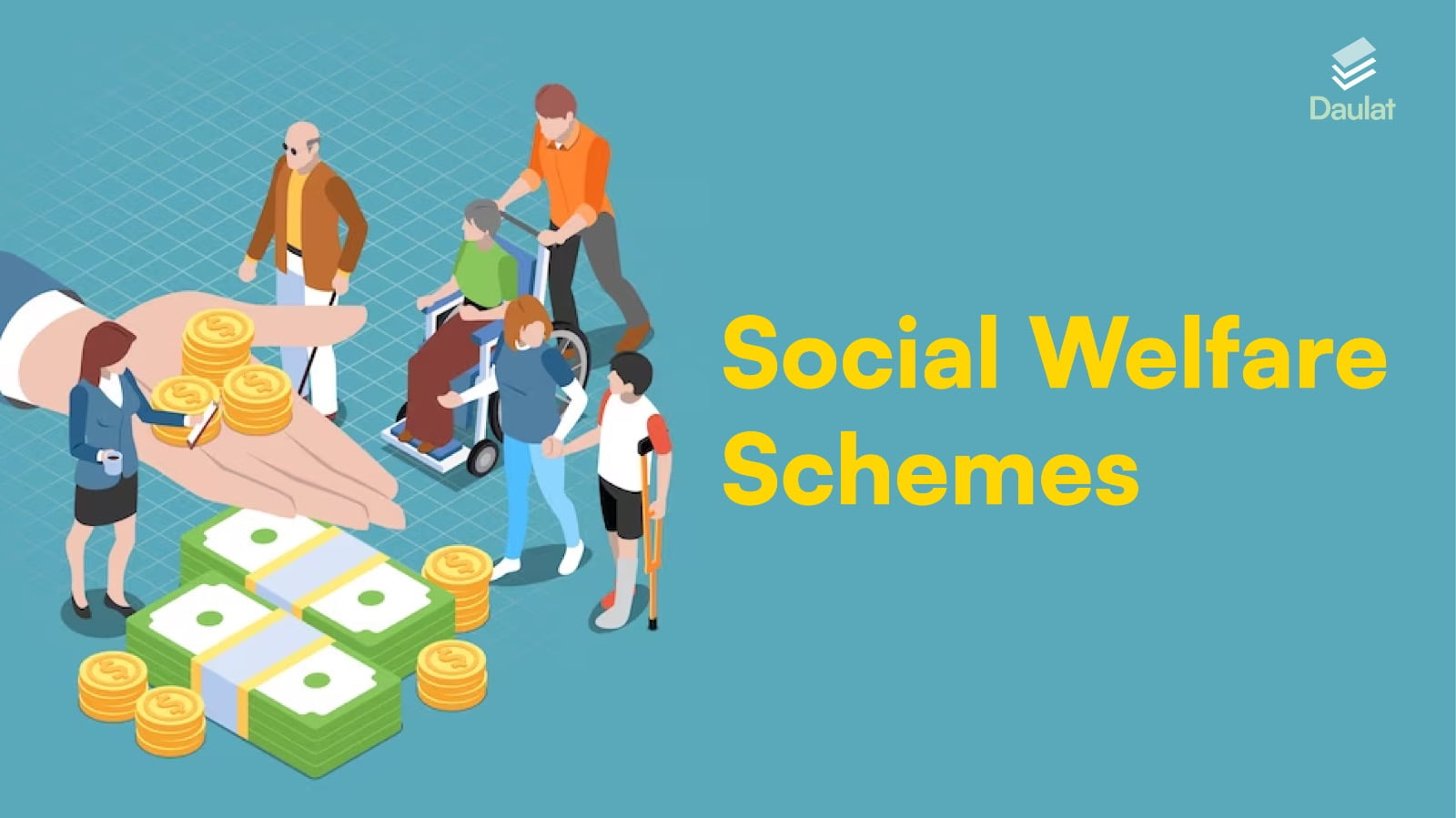The Government of India has consistently striven to improve the living conditions of its populace, particularly focusing on marginalized and disadvantaged groups.
The primary objective of social welfare schemes initiated by the Government of India is to improve the well-being and living conditions of its citizens, particularly those in marginalized and vulnerable groups. These schemes aim to address various socio-economic needs and challenges faced by the population, including farmers, economically disadvantaged families, bereaved families, individuals in need of housing, and vulnerable populations such as the elderly, widows, and disabled individuals. These programs provide financial assistance, healthcare coverage, housing support, and social security to enhance the overall quality of life and promote social inclusion and equity across the country.
List of Social Welfare Schemes
Several government assistance programs have been instituted over time to address the multifaceted needs of the Indian population. In this blog, we will delve into the intricate details of several significant government social assistance programs, encompassing PM-KISAN, PMJAY, NFBS, PMAY-Gramin, and NSAP, providing comprehensive information on the funding, eligibility prerequisites, and objectives of each.
1. Pradhan Mantri Kisan Samman Nidhi (PM-KISAN)
Objective: The primary aim of PM-KISAN is to extend direct financial support to farmers across the country.
Funding: Eligible farmers receive an annual monetary grant of ₹6,000, disbursed in three equal installments of ₹2,000 each.
Eligibility:
– Land-owning farmers with cultivable land are considered eligible.
– Small and marginal farmers, those with land holdings of up to 2 hectares, qualify.
– Beneficiary units include families comprising the husband, wife, and minor children.
2. Pradhan Mantri Jan Arogya Yojana (PMJAY)
Objective: PMJAY, also known as Ayushman Bharat, seeks to provide healthcare coverage to economically underprivileged families.
Funding: PMJAY offers health insurance coverage of up to ₹5 lakh annually per family to cover hospitalization and surgical expenses at ₹500/annum.
Eligibility:
– Families facing socio-economic vulnerability, as identified based on the Socio-Economic Caste Census (SECC) database, are eligible.
– The program encompasses a wide array of medical treatments and conditions.
3. National Family Benefit Scheme (NFBS)
Objective: NFBS extends financial support to families grappling with financial hardship due to the loss of the primary breadwinner.
Funding: Eligible beneficiaries receive a one-time grant of ₹20,000.
Eligibility:
– The family must fall below the poverty line (BPL).
– The demise of the primary breadwinner should result from natural causes or accidents.
– Beneficiary families must not be covered by any other government insurance or pension scheme.
4. Pradhan Mantri Awas Yojana (PMAY-Gramin)
Objective: PMAY-Gramin endeavors to provide economical housing to rural households, ensuring they possess a secure and decent place to reside.
Funding: The program offers financial assistance for house construction or renovation, with varying amounts dependent on construction type and geographical location.
Eligibility:
– Beneficiaries encompass individuals from economically weaker sections (EWS), scheduled castes, scheduled tribes, and other vulnerable groups.
– Eligibility criteria may vary from state to state.
5. National Social Assistance Programme (NSAP)
Objective: NSAP serves as a comprehensive social security program targeting senior citizens, widows, and individuals with disabilities.
Funding: NSAP comprises several sub-schemes, with monthly pension amounts ranging from ₹200 to ₹1,000, contingent on the specific scheme.
Eligibility:
– Eligibility conditions vary among sub-schemes. Typically, beneficiaries should belong to BPL families, meet certain age criteria, or have specific disability levels.
– The program aims to provide a safety net for vulnerable populations.
Conclusion
The Government of India’s steadfast commitment to improving the quality of life for its citizens is apparent through these social welfare schemes. PM-KISAN, PMJAY, NFBS, PMAY-Gramin, and NSAP cater to diverse needs, offering vital financial support to farmers, facilitating healthcare access, aiding bereaved families, providing affordable housing, and ensuring social security. These programs have a profound impact on countless Indian households, elevating them from poverty, guaranteeing healthcare access, ensuring food security, and establishing a safety net during crises.
As these initiatives continue to evolve and expand, they play an indispensable role in fostering a more inclusive and equitable society in India. Through these social assistance programs, the Government of India is making steadfast progress toward its goal of ensuring a brighter future for all its citizens, irrespective of their socio-economic backgrounds.
Frequently Asked Questions
Q1: What is the primary purpose of social welfare programs like PM-KISAN and PMJAY?
The primary purpose of programs like PM-KISAN is to provide direct income support to farmers, while PMJAY aims to offer healthcare coverage to economically disadvantaged families, ensuring they have access to quality medical treatment.
Q2: Who is eligible to receive benefits under PM-KISAN?
Eligible beneficiaries for PM-KISAN include land-owning farmers with cultivable land, small and marginal farmers with land holdings of up to 2 hectares, and families comprising the husband, wife, and minor children.
Q3: How does the National Family Benefit Scheme (NFBS) assist families during times of bereavement?
NFBS offers a one-time grant of ₹20,000 to families living below the poverty line who have lost their primary breadwinner due to natural causes or accidents. This financial assistance helps the family cope with immediate expenses.
Q4: What is the objective of Pradhan Mantri Awas Yojana (PMAY-Gramin)?
PMAY-Gramin aims to provide affordable housing to rural households, ensuring they have secure and decent living conditions. It offers financial assistance for house construction or renovation.
Q5: Who is eligible to receive pensions under the National Social Assistance Programme (NSAP)?
Eligibility criteria vary among NSAP sub-schemes, but typically, beneficiaries include senior citizens, widows, and individuals with disabilities who belong to below-poverty-line (BPL) families or meet specific age and disability criteria.





